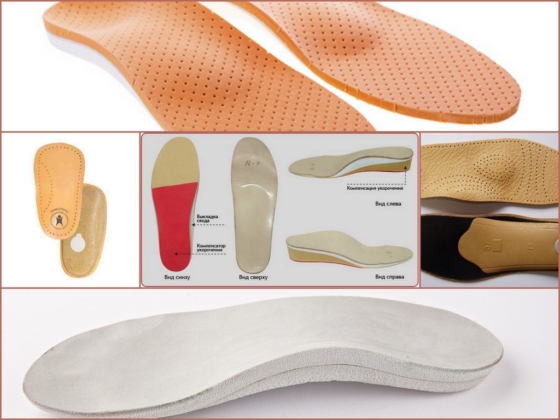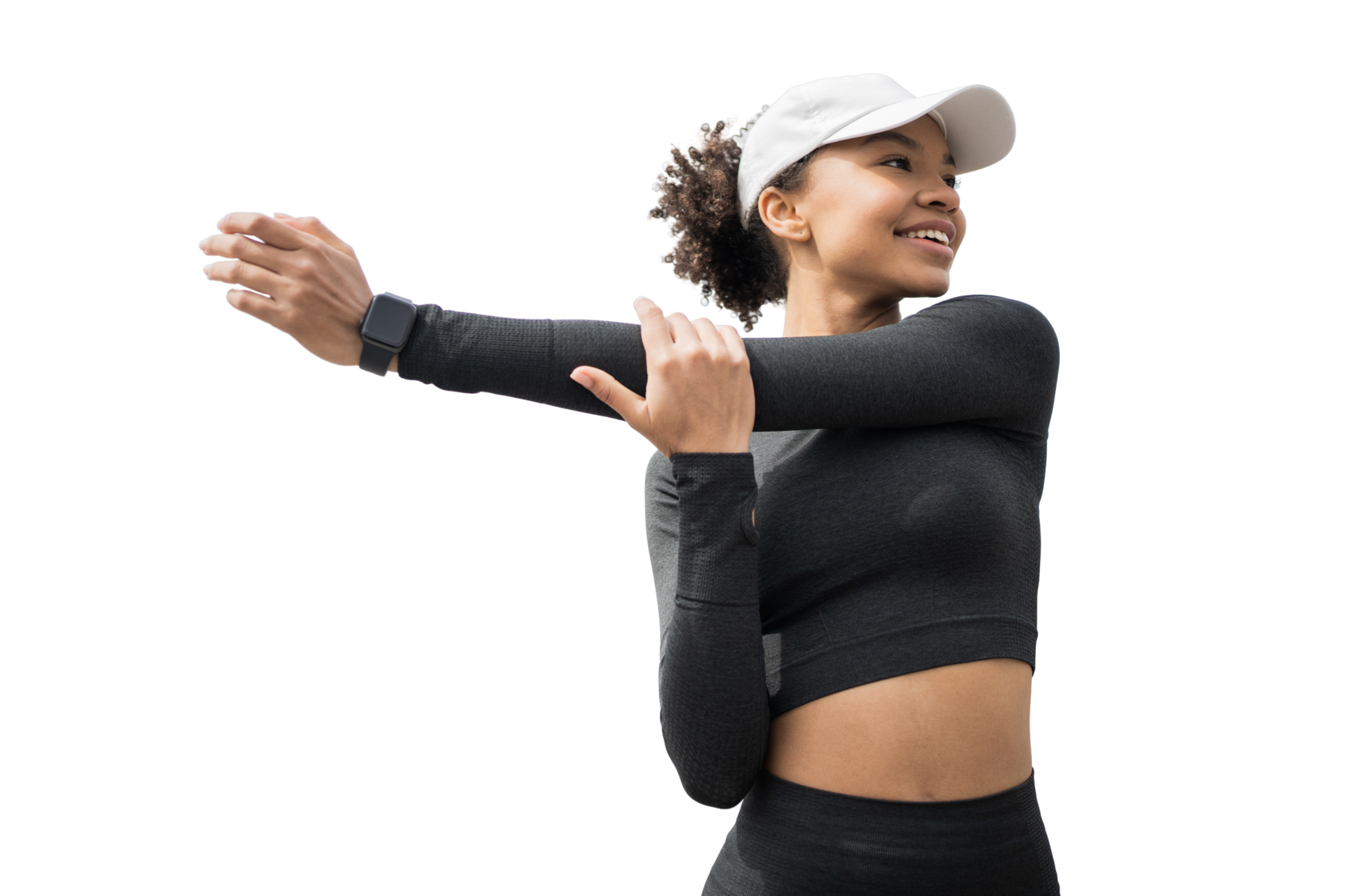The most important parameter when choosing an insole is the length of the foot. It should correspond to the size of the foot and not cause any discomfort.

- Formotic deposits
- Custom-made insoles from the FormTotix system are essential:
- Fixation inserts for your feet
- Who Needs Orthotics?
- insoles
- The main goals of insole coverage are.
- Principles of self-sufficiency with deposits
- How to properly care for orthoses
- Why do we need them?
- Choosing the right orthopedic insoles for flat feet
- How do orthopedic insoles affect flat feet?
- types of orthotics
- AdobeStock_237596083-1.jpg
- AdobeStock_383315263-1.jpg
- Different types of insoles
- Custom insoles
- How to choose shoe inserts
- Selection of orthoses for children
- How to choose adult orthopedic insoles?
- reviews
Formotic deposits
The foot has several functions. The most important is the support function (standing, walking), another is the cushioning function. The foot bears the load when walking, running and standing. When a foot deformity develops, it transfers that load and travels further up - to the hips, knees, lumbar spine. The purpose of orthotics is to relieve pressure on the feet and other parts of the musculoskeletal system. This primarily involves the legs, the lumbar spine and the lower thoracic spine.
The unique blank material has no analogues in all countries of the world. Service life of up to 5 years - high wear resistance! The optimal support surface is formed by the balance normalization function using biofeedback.
Even if healthy people wear insoles, the risk of the emergence and development of foot pathologies is reduced. The insoles have anti-stress properties, provide control over movement, reduce foot fatigue and the risk of injury.
Book an appointment by phone +7 (499) 703-48-40 or online:

Custom-made insoles from the FormTotix system are essential:
- For excessive foot and spine stress With excessive loads on the feet and spine - standing work, sharp weight gain, sports performed by unprepared people.
- For endocrine disorders and changes. In particular, age-related changes, pregnancy and lactation, diabetes, osteoporosis, corns, chronic stress.
- With hereditary predispositionGeneral hypermobility syndrome, flat feet or predisposition to them, X-shaped knees and other lower limb conditions
- In congenital and neonatal pathologies. The best known is infantile cerebral palsy (cerebral palsy). This pathology leads to foot deformities and curvatures, often associated with pain, pathological positioning of the limbs and abnormal development of the musculoskeletal system.
- In diseases and injuries of the nervous system. The range of such diseases is quite wide – stroke, multiple sclerosis, etc.
- injuries and chronic overloadsFor structural and functional disorders of the lower limbs and feet. For example, in the case of misalignments of the musculoskeletal system and the resulting overload and premature wear and tear of the joints.
- In today's rhythm of life. Our ancestors walked barefoot on stones and earth, which provided a natural posture for the feet. Modern man walks on flat and rigid artificial surfaces, which means that the components of the arch of the foot (ligaments, bones, muscles) are heavily stressed. The natural arch of the foot flattens and deforms over time.

Fixation inserts for your feet
By taking care of your musculoskeletal system, you can prevent many diseases that are common in today's world. A major obstacle to easy walking is back and foot pain, which can be caused by foot problems. Don't self-diagnose foot conditions, and don't trust a sales representative who may make a mistake in choosing the right tools. An orthopedic aid should only be purchased after an orthopedist has examined and diagnosed your foot problem. The diagnosis has a direct impact on the correct choice of insoles. In Dobry Ortopeda online store it is very easy to buy orthopedic insoles, because we have specialists who will advise you on choosing the best insoles.
If you decide to purchase a foot corrector, you are likely to encounter a number of issues. Keep in mind some rules that will help you avoid the hassle of buying. You can buy orthopedic insoles at Good Orthopedic Shop. We offer several types of orthopedic insoles:
- transverse;
- along;
- pads for the treatment of mixed flat feet;
- insoles for heel spurs;
- insoles for children.
In addition to this range, the following products are also available.
- Cage liners for closed shoes;
- half insoles for high heel shoes;
- supportive prophylactic insoles.
The most important requirements for a manufacturer of orthopedic insoles are:
- presence of a recess under the heel;
- the presence of a metatarsal cushion;
- supinator;
- an overlapping raised surface;
- compatibility of the size of the insole with the size of the shoe;
- made of polymer materials, natural leather and cork.
In the online shop 'Good Orthopedist' you can buy orthoses at an attractive price. You will receive support in choosing orthoses that do not cause any discomfort when walking. Their shape can change during wear, so you should take the time to replace them in a timely manner, but only after consulting a specialist.
Who Needs Orthotics?
Athletes can benefit from orthotics to improve leg support and comfort, increase performance and reduce the risk of injury.
They can help correct foot problems and improve balance and stability during movement.
Orthotics can help people with foot, knee, and lower back pain. They reduce the pressure on the joints, prevent pain and deformity and reduce the risk of injury.
People who spend a lot of time on their feet can use orthotics to better support and carry their legs more comfortably, reduce fatigue and pain from long standing, and maintain correct foot position.
They can also prevent various foot problems that can arise from being on your feet for a long time.





Orthotics help children maintain correct foot position and reduce foot pain and fatigue. They can also help correct problems like flat feet.
Given the active growth and development of bones and muscles in children, the use of orthotics can prevent more serious problems in the future and maintain healthy feet throughout life.
Orthotics are essential for overweight people and pregnant women. They help reduce stress on feet by evenly distributing them, preventing foot pain and deformity. Orthotics can also help reduce foot swelling and the risk of injury that results from spending long periods of time on your feet.
insoles
The main goals of insole coverage are.
- eliminating signs of disease and reducing the risk of disease progression;
- Distributing the load on the foot, cushioning the shock load on the spine and joints of the lower limbs;
- Provides comfort when wearing shoes and reduces foot fatigue and pain.
- All types of flat feet including;
- pes cavus;
- heel spur;
- valgus and varus foot deformities;
- ,Hallux valgus
- hammer toes and claw toes;
- Morton's neuroma;
- Hyperhidrosis - excessive sweating in the foot area, often accompanied by an unpleasant odor.
- varicose veins;
- Diabetes;
- Arthritis, osteochondrosis, scoliosis and other diseases of the joints and musculoskeletal system;
- various injuries of the lower limbs.
- uneven slipping off of shoes;
- corns, calluses, cracks, ingrown toenails;
- quick fatigue of the feet after walking;
- swollen feet at the end of the day;
- Pain and cramps in the feet.
If the left and right foot are deformed to different degrees and there are anatomical peculiarities of the musculoskeletal system (e.g. (e.g. different leg lengths, pelvic valgus, spinal curvature, injuries), then the most pronounced therapeutic effect is achieved with custom-made orthoses that take all characteristics into account The foot diagnosis and the fitting of orthoses can be done in one of our orthopedic centers.
Principles of self-sufficiency with deposits
- Soft insoles relieve the foot muscles, evenly distribute the load and provide comfort when wearing shoes. These insoles are suitable for the prevention and treatment of the initial stages of longitudinal, transverse and permanent flat feet. Suitable for pregnant women, diabetics, first signs of thumb problems, suitable for running, jumping, skiing, snowboarding and skating.
- Rigid insoles with plastic or other polymers. These products provide better cushioning and are more durable than soft insoles. These insoles are indicated for longitudinal flatfoot, transverse flatfoot, combined non-fixed flatfoot, arthrosis, suitable for long standing, for an active lifestyle, for sports without running and jumping, and for overweight people.
How to properly care for orthoses
Buy orthopedic insoles via the shopping cart or by calling +7 (499) 350-77-48. We deliver orthopedic insoles in Moscow, as well as in Podolsk, Khimki, Korolev, Mytishchi, Lyubertsy, Krasnogorsk, Electrostal and other places in the Moscow region.

Valery Shevchenko is the editor of an article on choosing orthotics.
Ortix training center manager, medical expert in orthopedic products, general practitioner
Why do we need them?

A healthy foot consists of two arches that play an important role in cushioning, maintaining foot balance, and providing partial relief from constant body weight loads. Anomalies in the height of the arch of the foot lead to pain in the lower back, spine and legs. This is because over time the foot flattens and the ligaments weaken, shifting weight to the joints and spine. When the foot begins to deform, medical specialists prescribe shoe inserts for flat feet.
Orthoses are needed when the characteristic symptoms of a flat foot appear:
- excessive fatigue in the lower limbs;
- drawing pains after long walks;
- occasional swelling in ankles;
- the size of the foot has changed in length and width;
- the shoes become slippery on the inside.
Children should be provided with insoles at an early stage to protect them from later illnesses. The first symptoms are: slight clubfoot, walking on the inside of the foot, abrasions on the soles of children's shoes.
When an adult or a child has been diagnosed with the symptoms of flat feet, he or she should see a podiatrist and choose an appropriate method of preventing and treating the problem.

Good quality shoes are rightly considered the main way to get rid of the problem. The sock should not pinch the toes, there should be a soft material under the heel that acts as a shock absorber, and the foot should be supported by a springy support. Orthotics perform all of these functions, helping to reduce foot fatigue, relieve pressure on the spine, and prevent blisters and reduced skin sensitivity.
Choosing the right orthopedic insoles for flat feet
Prophylactic and sports insoles are available in orthopedic salons, pharmacies, at kiosks in clinics and in stores selling comfort shoes. They have different functions. The former are suitable to restore the natural alignment of the feet, the latter to prevent foot problems.
Sports insoles are used by athletes to improve cushioning and support, increase endurance and reduce the risk of injury. The product helps to evenly distribute loads and stabilize the ankle during sport.
Custom-made therapeutic insoles are prescribed by the doctor and selected individually for each patient, since the feet have their own anatomical features. The orthopedist takes an impression and makes the insoles individually.
With a slight foot deformity and at the initial stage of flat feet, it is enough to buy a prophylactic insole. These insoles have special basins to support the arch of the foot, a supportive pad and what is called a metatarsal roll - a raised plate under the foot that resides in the midsole.
How do orthopedic insoles affect flat feet?
Congenital weakness of the ligaments, uncomfortable shoes, increased pressure on the feet, swelling and pain. Orthotics are a good way to prevent and treat flat feet.
- They improve blood circulation;
- support the musculoskeletal system;
- reducing joint and foot pain;
- Correct distribution of the load when walking.
Recommended for recovery from injuries. They help reduce stress during sporting activities. Recommended for the elderly when muscles and ligaments are visibly weakened. They effectively distribute the load when walking in pregnant women and heavy people.
These products make life easier for people who spend a lot of time on their feet during the day and for women who prefer high-heeled shoes.
types of orthotics
If you do not know which orthoses are best suited and how to choose them correctly for transverse and longitudinal transverse flatfoot, you should familiarize yourself with the types and purpose of these products. The insoles are made depending on the type of deformity and individual characteristics.
- Filled – insoles used for transverse, longitudinal and combined flat feet.
- Half insoles or supinators. The springy surface supports the different heel and rearfoot arches with a supinating insert.
- heel pad. Ensures correct heel alignment. The result is less stress on the joint and less pain from cracked heels and heel spurs. Available in lengths of up to 3cm.
- Insoles, also called pelots. They relieve the foot and prevent corns when wearing high-heeled shoes.
AdobeStock_237596083-1.jpg

AdobeStock_237596083-1.jpg
Orthopedic insoles for flat feet can be purchased for the conservative treatment of foot deformities. They are sold in every medical supply store and in some pharmacies. However, it is always better to have them custom made. In this case, they ensure a complete restoration of gait and posture, correcting the shape of the foot accordingly.
Custom orthopedic insoles for flat feet always take into account:
- the individual shape of the foot;
- the areas of greatest overload;
- the need for vault reshaping;
- energy-saving insoles;
- thermoregulation.
The production of orthopedic insoles for flat feet is carried out using a mechanical-technical process (based on molds) and a computer process. In the former, models of the feet are made. An inlay is then made. Various manufacturing techniques can be used:
- Adhesion with air or vacuum forming;
- thermoforming with compression;
- extrusion process;
- Adhere.
The disadvantage of all these techniques is the incomplete compatibility with dynamic loads. Finally, the castings are made only in the static position of the foot. The individual adjustment of orthopedic insoles for flat feet is subjective, according to the patient's feelings. The manufacturing process is also very subjective as it consists of many handcrafted components.
AdobeStock_383315263-1.jpg

AdobeStock_383315263-1.jpg
For this reason, pedobarography is increasingly used to produce orthoses for flat feet. With the help of a computer-supported orthopedic system, the pressure distribution on the surface of the sole of the foot is determined. These parameters are objective. This makes it possible to produce insoles that come close to the ideal, individually fitted flat foot. Biomechanics are assessed not only in a static position, but also while walking.
Different types of insoles
- The construction must have a supinator, ie a rigid frame that supports the foot and distributes the load evenly;
- A heel shock absorber to balance the dynamic loads is mandatory;
- In some cases, an insole with heel wedges is recommended (if the foot is supinated or pronated).
Ideally, an insole is made from a 'memory' material. This material supports the arch of the foot and keeps the heel bone in the correct position. In this case, the insoles are shaped to compensate for the impact of the foot and prevent flat feet from developing. At the same time, they stiffen the heel and ensure that the foot sits firmly in the selected footwear.
Custom insoles
Unfortunately, not all insoles that are commercially available (given the variety of these products) may fit a particular patient. This means that insoles must be custom made to determine the exact size of the patient's foot in order to correct a specific pathology.
The patient comes to the podiatrist, who takes an impression of the foot. Computer simulation can also be used to model future insoles as accurately as possible.
Choice of insoles for a child
Pathologies that occur in adults can also occur in children. For example, many foot problems can be caused by ill-fitting shoes. Flat feet are the most common problem in children.
Since the transverse arch has not yet formed, orthopedic insoles for children should have a thick insole. Doctors recommend fitting the insole precisely to the size of the foot. Orthopedic insoles for children are made from materials that do not cause allergic reactions.
So it's easy to find orthopedic insoles that will fix a foot problem. But in any case, it is better to choose a product based on individual parameters. Buy only after consulting an orthopedist. Otherwise, the health problems can only worsen. This is especially true for children.
How to choose shoe inserts
Choosing the right insoles has a positive effect on the treatment of valgus. Nowadays, there is an insole for every taste and every budget. It is advisable to consult a doctor before purchasing an orthosis, especially when choosing orthotics for children or when treating an advanced valgus in adults.
Selection of orthoses for children
The selection of orthotics for children with valgus deformity should be taken seriously. The problem will worsen with age if not corrected early. Before buying orthotics or shoes, you should consult a professional who will calculate the required height and shape of the orthosis. Longitudinal flat feet are often diagnosed in infants, so the arches of the feet need extra support to keep the foot in the correct position.
Interesting!!!
To prevent valgus deformity and flat feet, it is advisable to wear flat-soled shoes that are of good quality and have secure closures.
When choosing a valgus shoe for children, the following points should be considered:
- The cushioning must fit well and support the ankle well without pinching the Achilles tendon;
- Stiff padding on the sides is necessary to prevent heel roll;
- The shoe should have arch support, a removable heel cup and a heel pocket so that the foot is well protected in the shoe when walking;
- The outsole should be stiff and stable, but flexible when walking;
- A wide, small heel helps the child develop good posture.

How to choose adult orthopedic insoles?
The different types of foot corrections make it difficult to choose a product. It is advisable to consult a doctor to find the right product to treat the deformity. Experts recommend using insoles made to individual measurements; they are more effective than standard insoles and normalize the position of the foot.
reviews
The effectiveness of insoles is confirmed by numerous testimonials from patients. With the right insoles, symptoms will subside over time, but it can take time.
I'm a massage therapist, so I spend a lot of time on my feet. A few years ago I noticed that my feet were getting more and more painful after a day's work and went to the doctor. After an examination, I was diagnosed with a valgus deformity and prescribed orthopedic insoles. For a few days walking and standing with them was very uncomfortable, but now I can't even imagine living without them. When I'm not wearing them, I feel uncomfortable. I've already forgotten what tiredness and swollen feet are, my toes don't stick out anymore.
Gennady, 37 years old, Ufa.
My child has a shallow valgus deformity, so he needs to wear orthotics and shoes. I read the opinions of parents and doctors on the Internet and went to the pediatric surgeon. When I put the shoes on for the first time, the child was upset and said they were uncomfortable. But after a few days he stopped complaining that his feet hurt when he walked. After 3 months, the doctor noticed that the alignment of the feet had improved, which made us very happy.
Yelizaveta, 29, Yekaterinburg.
She started wearing leather insoles a few months ago on the advice of her doctor. A slight valgus deformity made life difficult for me: in the evenings my feet were very sore and swollen. I ordered insoles for my individual measurements, and the effect was felt very quickly - all unpleasant symptoms went away. The insoles are soft, comfortable and fit all shoes, I have never regretted ordering them.
Alina, 42 years old, Kaliningrad.
Orthotics are effective in treating valgus foot deformities in both children and adults. It is important to choose the correctors according to the size and stiffness of the supinator to correct the pathological position of the joint. If all the recommendations for wearing insoles are followed, the condition can be treated, but it will take time.
Read more:- Orthotics for flat feet.
- Tailor-made insoles for sports shoes.
- orthoses for children.
- Buy insoles for children's shoes.
- Supinators for flat feet.
- Shoes for flat feet.
- Insoles are suitable for.
- orthopedic insoles.
